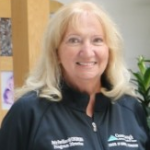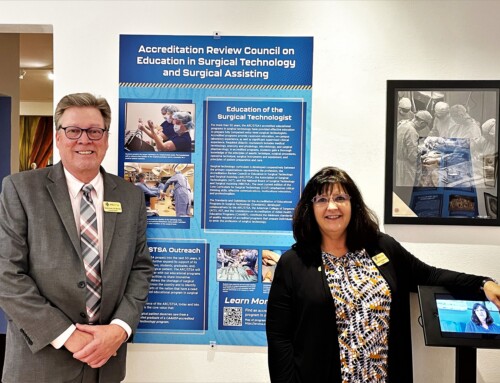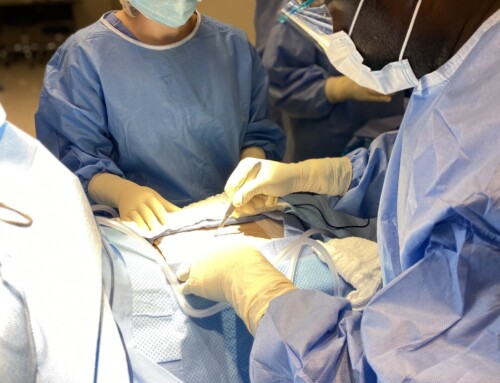By Chris Ahearn, AAS, CST
When I transitioned from the OR to a program director position at a new surgical technology program, I wanted to learn all I could about how to create and maintain a successful program. As educators across the country pursue excellence every day and successfully graduate competent, entry-level surgical technologists, the ARC/STSA and EdAccred continue to look for ways to share stories and strategies of success. This article is the first in a series where we ask three program directors to spend a minute with us to share their advice and insights on strategies that help their programs stay vibrant and successful, and to fulfill the critical need for CSTs in their communities and beyond.
Ashley Sumner, AS, CST, surgical technology program director at Technical College of the Lowcountry, Beaufort, South Carolina, has been PD since 2021 and the program has been accredited since May 2006.
Janet Hotis, AAS, CST, is surgical technology program director at Western Suffolk BOCES, Dix Hills, New York. Hotis has been program director since 2019 and the program has been accredited since October 1998.
Patricia Pavlikowski, BS, CST, from Conemaugh Memorial Medical Center in Johnstown, Pennsylvania, has been an instructor with the surgical technology program since 1977, and program director since 1987. The program has been accredited since June 1976.
Which new or innovative strategy have you implemented to better prepare your graduates for successful careers as CSTs?
At Western Suffolk BOCES, we incorporate physical skills training into every didactic lesson. All countable items get passed around so by the time clinical comes, students feel comfortable handling these important everyday items.
We have also increased our lab time. Items to be used in surgery, like sutures, medications and surgical staplers are keys to student performance at clinical. By adding extra emphasis on these important skills while in the lab, and during didactic lessons, improvement in students’ physical skills have been noticed by preceptors at the hospital.
Together with our very supportive administration at TCLC, and our outstanding adjunct, Michael Lane, we have incorporated sterile processing department training into our curriculum. Students graduate with dual certification eligibility.
Additionally, we require all students to pass two 200-level biology courses. Plus, we have started using an electronic case counting program to track all aspects of clinical rotation. Our faculty and student love it. And finally, we ask each student to develop a lesson plan and ‘Teach it Back’, which helps them drill down into a subject like positioning, or surgical anatomy.
At Conemaugh, we get students into the OR quickly, during the first two weeks. This helps put the student at ease when their actual clinical rotation begins.
We also take a full week to review for mid-term and final exams. Conemaugh’s hospital-based program allows time for these helpful sessions. Our CST exam pass rate has been 100% for 13 of the past 14 years!
Takeaway: Continuous introspection is key. Always look to improve, test new or creative approaches, and continually work to enhance students’ experience.
Up to 80% of today’s surgical technology students identify as a kinesthetic, or hands-on learner. How have you adapted your teaching methods to address this trend or other learning styles?
During the students’ early exposure to the OR, we encourage them to pay close attention to the scrub. Proper instrument passing and staying a step ahead of the surgeon are skills we encourage the student to develop.
We quiz our students very early on to identify their learning style. As a result, we spend lots of time on physical skills like suture handling and proper instrument passing. During these lessons, the faculty is committed to always staying positive in our critiques of the students.
Mock surgeries are incorporated very early on in students’ lab time. We cover draping skills extensively during this time, and our clinical partners have noticed improvement in our students during rotation at the hospital.
Takeaway: Understand which methods work for each learner’s style, such as the need to repeat and practice physical skills for the kinesthetic learner, while providing positive feedback to each student.
10 seconds left! Briefly, what motivates you to succeed as a program director?
Seeing the potential of this program and being a vital part of the growth for my students’ personal success.
I have a strong drive to produce the most competent student possible.
Providing our students with wonderful jobs that have great benefits.
Takeaway: Put the student at the forefront of daily activities to ensure they receive a solid foundation for their career as a surgical technologist.
Many thanks to Ashley, Janet, and Patty for providing fantastic tips for maintaining success. Email erin.monroy@arcstsa.org if you would like to contribute to future Success in Sixty Seconds!
Chris Ahearn, AAS, CST, served in the United States Air Force from 1978-1982 where he received his CST training. Ahearn worked for more than 30 years at the Level I Trauma Center -Stony Brook University Hospital on Long Island as a CST, clinical educator, ST program instructor, and finally, as program director at Suffolk County Community College, which received its initial accreditation in 2021. Ahearn serves as chair of the ARC/STSA’s Editorial Advisory Board where he is an active contributor.









